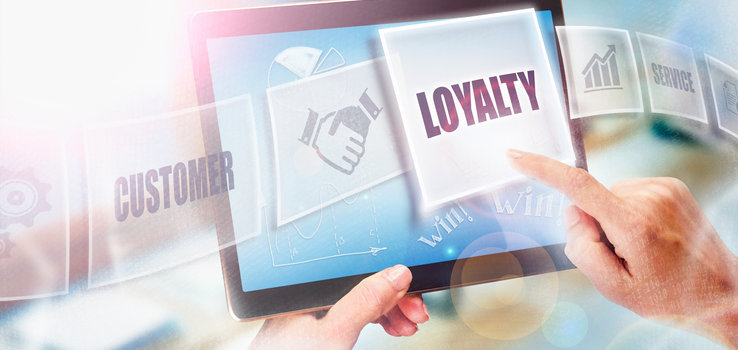Companies that retain loyal customers tend to be more successful than those with high churn rates. According to research conducted by Deloitte, companies that are customer-centric are 60 percent more profitable than those that aren’t customer-focused. But implementing a plan to reduce customer churn and increase loyalty is easier said than done. Your organization needs to create a strategy that reflects your industry, your customer relationships, and evolving consumer expectations.
In this article, we’ll look at the best practices your company can use to start reducing churn.
What Is Customer Churn?
Customer churn is the process of losing customers. The customer churn rate (also known as the attrition rate) is the rate at which you lose customers. This loss can be for any reason – buyers might switch to a competitor or stop using the products or services you offer altogether.
No matter what industry you operate in, losing customers is a part of the natural business cycle. This means you’re always going to have to invest in acquiring new customers to maintain sustainable profits and grow.
But, as acquiring customers eats up time and resources, it makes business sense to take steps to reduce customer churn and maintain relationships with the customers you already have.
3 Best Practices for Reducing Churn
There’s no cookie-cutter approach to reducing churn. Instead, there are best practices you can tailor to your business, industry, and customers’ needs.
Here are three best practices you can apply to your customer-loyalty strategy today.
1. Establish Your Baseline Numbers
When looking at what you can do to minimize churn, there are two numbers you’ll want to focus on: customer lifetime value and the churn rate in your industry. You should use these numbers when setting goals and deciding what actions to take to lower your attrition rate.
Customer Lifetime Value (CLV)
The CLV shows you how much a customer is worth to your company. It’s important to look at this metric because it helps you consider the future potential of each individual customer. Basically, when you know what someone is worth to your company, you can decide how much to spend to try and retain them.
CLV varies by industry. For example, the customer lifetime value for a B2B financial services company that provides a variety of financial products to small to mid-sized companies will be much larger than a computer repair store that serves individuals.
Average Churn Rates
You also want to look at the typical churn rate in your industry.
The reality is, churn rates vary widely, often for reasons that are industry-specific. For example, in 2020, the customer churn rate for general retail was 24 percent, but for big box electronics, it was only 11 percent.
Essentially, it’s not helpful to compare your churn rates to those found in other industries. But it is critical to look at what’s the norm for your industry so you can try to keep levels below that number.
2. Analyze Customer Experience Data
Once you have an idea of how much churn is acceptable and where you want your business to be, you’ll need to create a clear picture of how effective your company’s customer service and customer experience efforts are over time.
To do this, you’ll want to look at the metrics in your customer management and customer service communications systems, like your CRM (customer relationship management), sales management, and contact center software.
Your CRM or sales manager might show you customer satisfaction levels with metrics like the net promoter score, the customer effort score, and the rate of renewal – this software should also offer your customer churn rate.
You’ll find helpful insights in your contact center system that reveal the experience customers have when they interact with your company. Look at first-call resolution, interaction sentiment, and average handling time.
You can track these numbers to see how your customer satisfaction levels and churn change over time and to inform improvements in your strategy.
3. Map the Entire Customer Lifecycle
Taking a holistic approach to customer interactions will help you avoid weak points in the customer journey and deliver a higher-level customer experience.
To get started, create a map of the entire customer lifecycle, from prospect to churned. Identify every interaction point and whether the interaction is customer-led or business-led. Then, go into each interaction and look for ways to improve the experience.
Here’s an example of what that might look like at each stage of the lifecycle:
Prospect interactions: Prospects will browse your products online and may want to reach out to ask questions before buying.
To improve the experience, make sure your website offers an excellent user experience – it should be easy to navigate, information should be clear, and prospects should be able to access your contact information on every page.
New customer interactions: New customers might have questions about their product or want to return an item.
To improve the experience, your company can offer live chat support on the website so your customer support team can resolve issues quickly.
Active customer interactions: Your company might reach out to existing customers through outbound calls, email, or SMS messaging to offer incentives to make a purchase.
To improve the experience, find out what channels your customers prefer and use them when reaching out. For example, if customers aren’t opening emails, try switching to SMS messaging when sending promo offers.
Churned interactions: Your company might send out offers to try and win back customers.
To improve the experience, make it authentic. If your contact center allows for outbound calls, reach out by phone to try and connect with the churned customer. That extra time will make them feel valued, which might entice them back. This interaction is also an opportunity to find out how your company could improve your customer’s experience.
Empower Your Customer Loyalty Strategy with the Right Technology
No matter how successful your business is, it’s always important to look at your churn rate and follow best practices to keep that number low. But creating a strategic plan, setting reasonable goals, and actioning data-informed changes is only possible when you have the right tools.
Intermedia Contact Center is a cloud contact center system that integrates with other key business tools, such as unified communications, CRM, and business productivity apps. It offers useful insights and the ability to create customer reports. Learn more about how it can help your company better service your customers.
October 3, 2022
Explore other posts on these topics: Support Unified Communications





